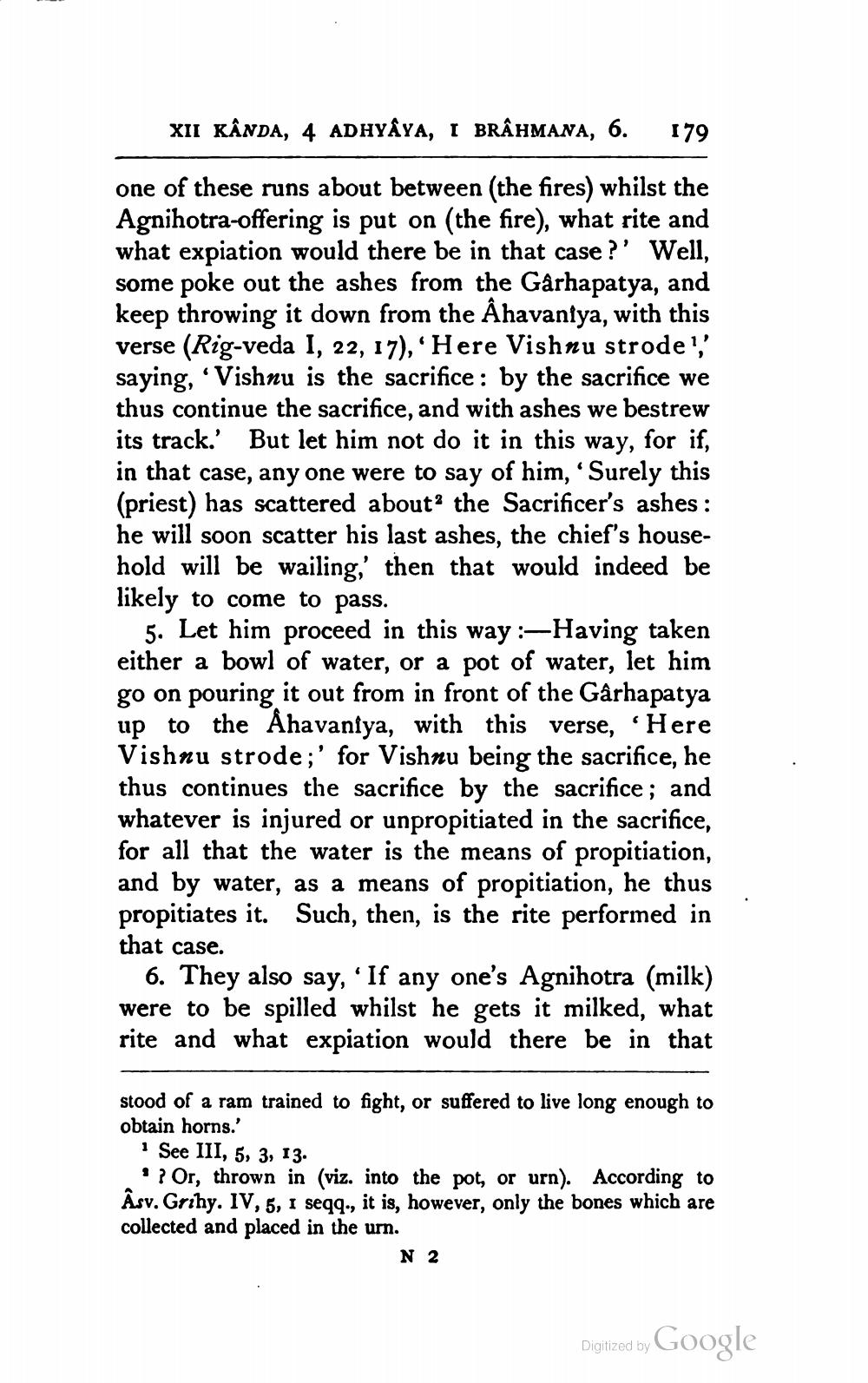________________
XII KANDA, 4 ADHYAYA, I BRAHMANA, 6. 179
one of these runs about between (the fires) whilst the Agnihotra-offering is put on (the fire), what rite and what expiation would there be in that case?' Well, some poke out the ashes from the Gârhapatya, and keep throwing it down from the Âhavantya, with this verse (Rig-veda I, 22, 17), 'Here Vishnu strode ',' saying, 'Vishnu is the sacrifice: by the sacrifice we thus continue the sacrifice, and with ashes we bestrew its track.' But let him not do it in this way, for if, in that case, any one were to say of him, 'Surely this (priest) has scattered about the Sacrificer's ashes: he will soon scatter his last ashes, the chief's household will be wailing,' then that would indeed be likely to come to pass.
5. Let him proceed in this way:-Having taken either a bowl of water, or a pot of water, let him go on pouring it out from in front of the Gârhapatya up to the Ahavantya, with this verse, 'Here Vishnu strode;' for Vishnu being the sacrifice, he thus continues the sacrifice by the sacrifice; and whatever is injured or unpropitiated in the sacrifice, for all that the water is the means of propitiation, and by water, as a means of propitiation, he thus propitiates it. Such, then, is the rite performed in that case.
6. They also say, 'If any one's Agnihotra (milk) were to be spilled whilst he gets it milked, what rite and what expiation would there be in that
stood of a ram trained to fight, or suffered to live long enough to
obtain horns.'
1 See III, 5, 3, 13.
? Or, thrown in (viz. into the pot, or urn). According to Âsv. Grthy. IV, 5, I seqq., it is, however, only the bones which are collected and placed in the urn.
N 2
Digitized by
Google




